Rust-Proofing
WHY SHOULD I RUST-PROOF MY CAR?
As many people know, every year rusting which results in rust damage costs car owners a lot of money. Rust corrosion is not visible to begin with. It often sneaks up on us, growing in places such as the inside of doors, sill boxes and other closed cavities.
A few factors resulting in rust corrosion.
• The construction of the car.
• Climate and environment, ie. if the roads happen to be salted as well as the surrounding humidity levels.
• How you maintain your car.
Check your rust-proofing every spring and autumn.
HOW TO USE OUR RUST-PROOFING PRODUCTS
Foundation and preparation
Wash and clean the surfaces that are to be treated. We recommend a high-pressure wash for this. Dont use too much degreasing agent as this dissolves any existing rust proofing. Wait until the cleaned surface is completely dry (approximately twenty-four hours). As for outer sill boxes, wing edges and end plates that are going to be treated with Carosol Body, it is important that Carosol Body is not applied directly to the bare metal. This must be treated first with a rust-proofing primer. If the lacquer is good, sanding it to a fairly matt finish using fine sandpaper is sufficient.
Step 1
Protect the floor or ground first with protective paper. Then spray with Carosol TO 3, a thin, wax-based penetrating rust proofing agent, onto the doors, door pillars, girders, sill boxes, etc. |
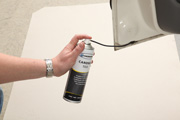 |
Step 2
Now it is time to rust-proof the cars wheelhouse and chassis with Carosol F 40, a thick rust-proofing agent. Before doing this, everything must be well cleaned and absolutely dry. Use a high-pressure washer and wait for at least twenty-four hours. This is important. When it comes to the chassis, we recommend that you prime the edges with our thin rust proofing agent Carosol TO 3, before you apply the thicker Carosol F 40. |
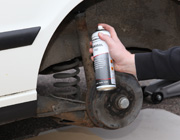 |
Step 3
If you have no inner wings, strengthening the rust-proofing of the wheelhouse with Hagmans Chassis Compound is sufficient. This will achieve better levels of durability against gravel sprays. Hagmans Chassis Compound is applied with a paintbrush. |
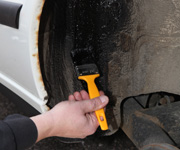 |
Step 4
In those places in which this is desired, a transparent rust-proofing agent, Carosol Rustproofing Wax Universal (spray), can be applied (a transparent rust proofing wax). Examples of areas of use are the wing edges of the cars engine housing, the boot space, on the edges of the cars doors, etc. |
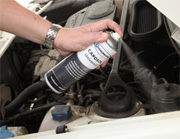 |
Step 5
The next step in the rust proofing treatment depends upon whether you want to protect the car’s sill boxes with stone protection. Perhaps there is evidence of rust or the lacquer is in poor shape? First sand down to the bare sheet plating, then dry the surface with a soft rag. After this, a rust-proofing primer is sprayed on, such as Hagmans Bodyprimer. All spray paints must dry for 15-20 minutes before you apply Carosol Body. If the lacquer is in good shape, sanding it lightly with dry fine-grit sandpaper is sufficient, such as grit-size P 180-240. |
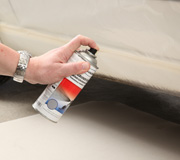 |
Step 6
When the rust-proofing primer has dried for 15-20 minutes, it is time to apply Carosol Body. Carosol Body, a rust and stone protection for the car’s sill boxes, front and end plates, wing edges, etc, is available as a spray and in one litre bottles; it withstands washing with degreasing agents and may be covered with a top coat, if desired, with most car lacquers. |
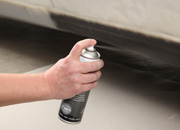 |
Golden rules
- Always be thorough with preparatory work.
- Always follow instructions for the product.
- Always strive to perform the work in a premise with a room temperature of about 20oC and with normal humidity levels.
- Always ensure good ventilation.
- Always handle the products with care and use protective equipment.
|